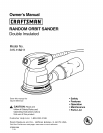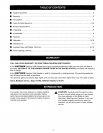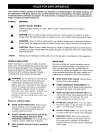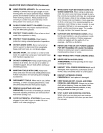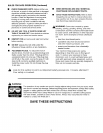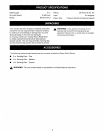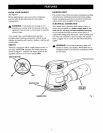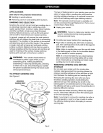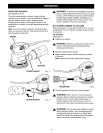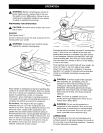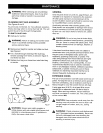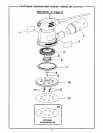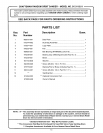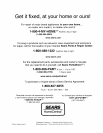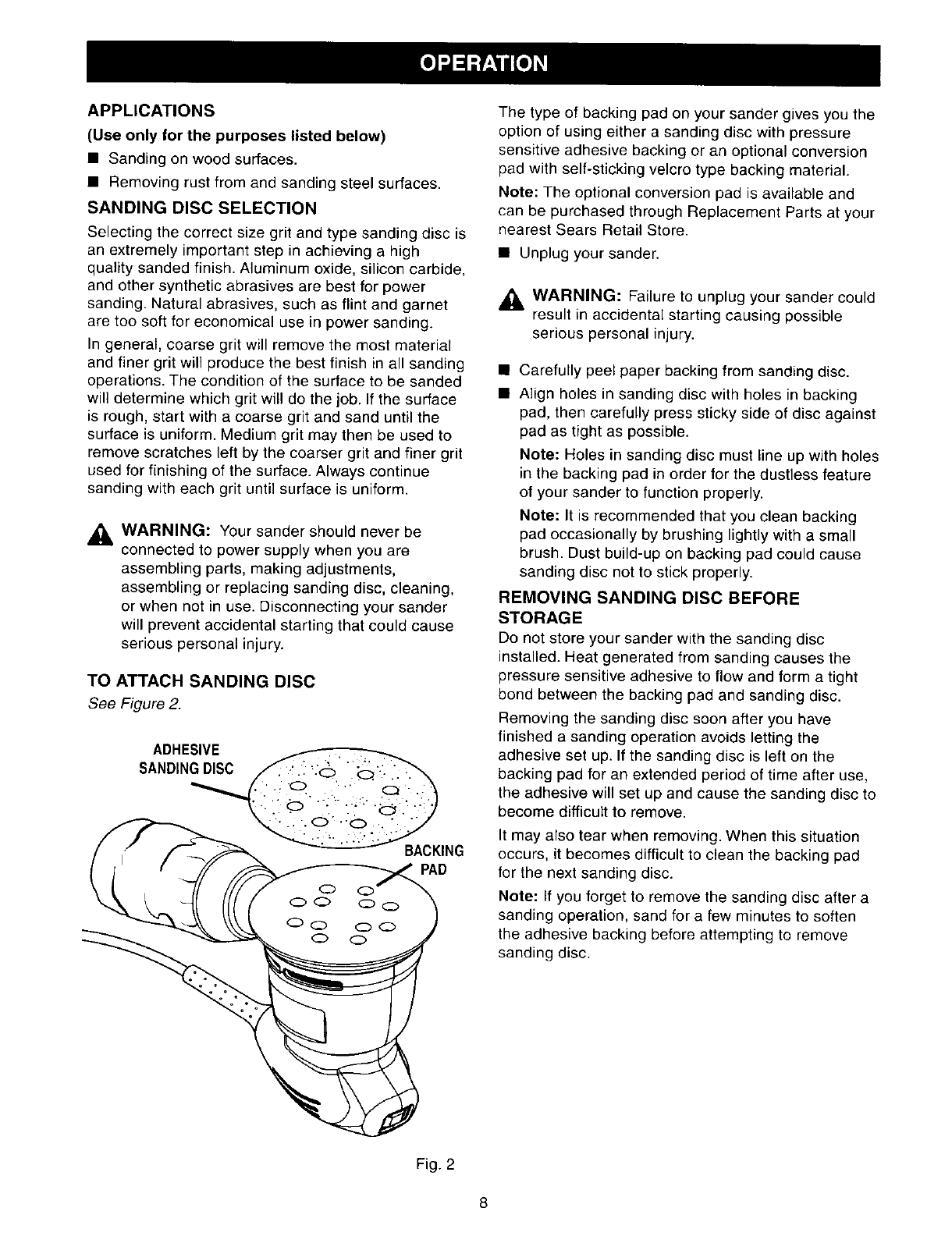
APPLICATIONS
(Use only for the purposes listed below)
• Sanding on wood surfaces.
• Removing rust from and sanding steel surfaces.
SANDING DISC SELECTION
Selecting the correct size grit and type sanding disc is
an extremely important step in achieving a high
quality sanded finish. Aluminum oxide, silicon carbide,
and other synthetic abrasives are best for power
sanding. Natural abrasives, such as flint and garnet
are too soft for economical use in power sanding.
In general, coarse grit will remove the most material
and finer grit will produce the best finish in all sanding
operations. The condition of the surface to be sanded
will determine which grit will do the job. If the surface
is rough, start with a coarse grit and sand until the
surface is uniform. Medium grit may then be used to
remove scratches left by the coarser grit and finer grit
used for finishing of the surface. Always continue
sanding with each grit until surface is uniform.
,_ WARNING: Your sander should never be
n
connected to power supply when you are
assembling parts, making adjustments,
assembling or replacing sanding disc, cleaning,
or when not in use. Disconnecting your sander
will prevent accidental starting that could cause
serious personal injury.
TO ATTACH SANDING DISC
See Figure 2.
ADHESIVE
BACKING
PAD
The type of backing pad on your sander gives you the
option of using either a sanding disc with pressure
sensitive adhesive backing or an optional conversion
pad with self-sticking velcro type backing material.
Note: The optional conversion pad is available and
can be purchased through Replacement Parts at your
nearest Sears Retail Store.
• Unplug your sander.
_1= WARNING: Failure to unplug your sander could
result in accidental starting causing possible
serious personal injury.
Carefully peel paper backing from sanding disc.
Align holes in sanding disc with holes in backing
pad, then carefully press sticky side of disc against
pad as tight as possible.
Note: Holes in sanding disc must line up with holes
in the backing pad in order for the dustless feature
of your sander to function properly.
Note: It is recommended that you clean backing
pad occasionally by brushing lightly with a small
brush. Dust build-up on backing pad could cause
sanding disc not to stick properly.
REMOVING SANDING DISC BEFORE
STORAGE
Do not store your sander with the sanding disc
installed. Heat generated from sanding causes the
pressure sensitive adhesive to flow and form a tight
bond between the backing pad and sanding disc.
Removing the sanding disc soon after you have
finished a sanding operation avoids letting the
adhesive set up. If the sanding disc is left on the
backing pad for an extended period of time after use,
the adhesive will set up and cause the sanding disc to
become difficult to remove.
It may also tear when removing. When this situation
occurs, it becomes difficult to clean the backing pad
for the next sanding disc.
Note: If you forget to remove the sanding disc after a
sanding operation, sand for a few minutes to soften
the adhesive backing before attempting to remove
sanding disc.
Fig. 2
8



